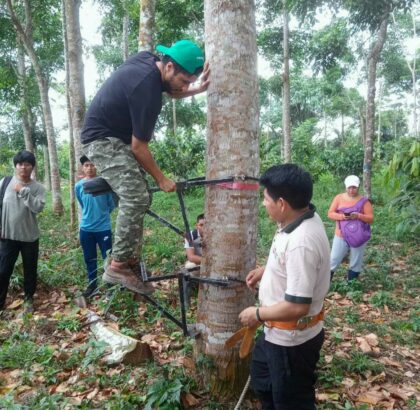During the past September, our team took part in a tree climbing course sponsored by the Salvacion Technological Institute “I.E.S.T.P. Manu” and the Peruvian Institute of Agricultural Innovation (INIA). This training was specifically tailored for farmers and individuals actively engaged in conservation work. It aimed to equip them with the necessary skills for carrying out a range of tasks, such as collecting leaves, flowers, fruits, or seeds from trees, as well as installing canopy camera traps and engaging in other relevant activities.
During the course, we received a theoretical presentation on various tree-climbing techniques, some of which demand significant physical exertion. Among the techniques covered, there were three in total, one of which was the method employed by local residents for harvesting aguaje, a type of local palm.

The second technique involved the use of specialized equipment that allowed you to sit, providing greater upper body mobility for sampling trees. In this method, the legs were used for propulsion to ascend the tree. The final technique is the one most familiar to Crees, as we have previously undertaken projects like “Tree Top Manu.” This method involves the use of pulleys and ropes, which can make climbing easier but necessitates more extensive preparation for those who will be ascending the trees.
These techniques are immensely beneficial for working with trees, especially given their towering height and challenging physical characteristics. However, they do demand a considerable amount of courage and are not recommended for individuals who have a fear of heights. Personally, I had a fear of heights, but this opportunity provided a chance to confront my fears and connect with the awe-inspiring majesty of trees that have been growing for countless years, providing us with oxygen and a beautiful habitat to inhabit.
Continuous training with local partners
